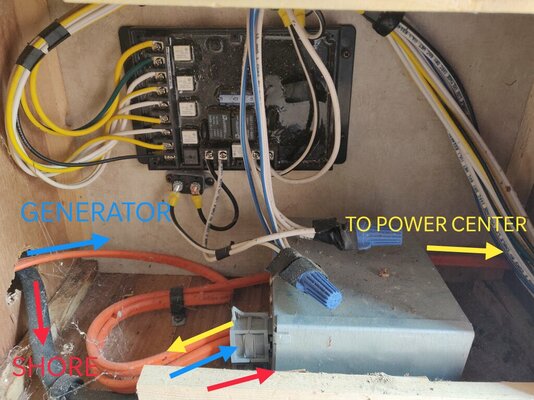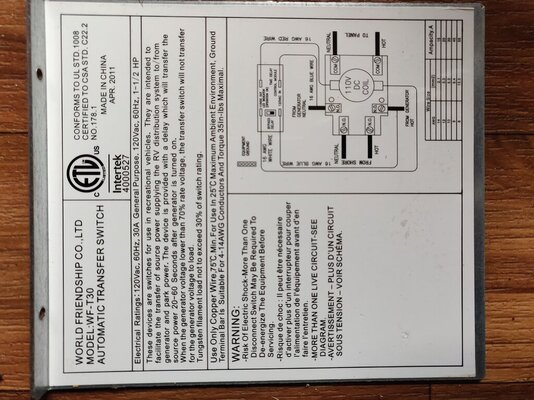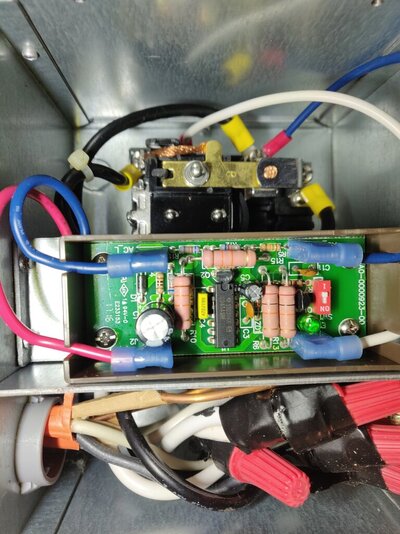Gary RV_Wizard
Site Team
Agree, Wally. Looks like it was designed to accommodate an ATS, but none is there.
Where do those two orange-sheathed wire bundles go to? Is one of them the shore cord connection? And the other that outside box shown in post #8? How does power get from that box to the 30A load center?
Where do those two orange-sheathed wire bundles go to? Is one of them the shore cord connection? And the other that outside box shown in post #8? How does power get from that box to the 30A load center?



